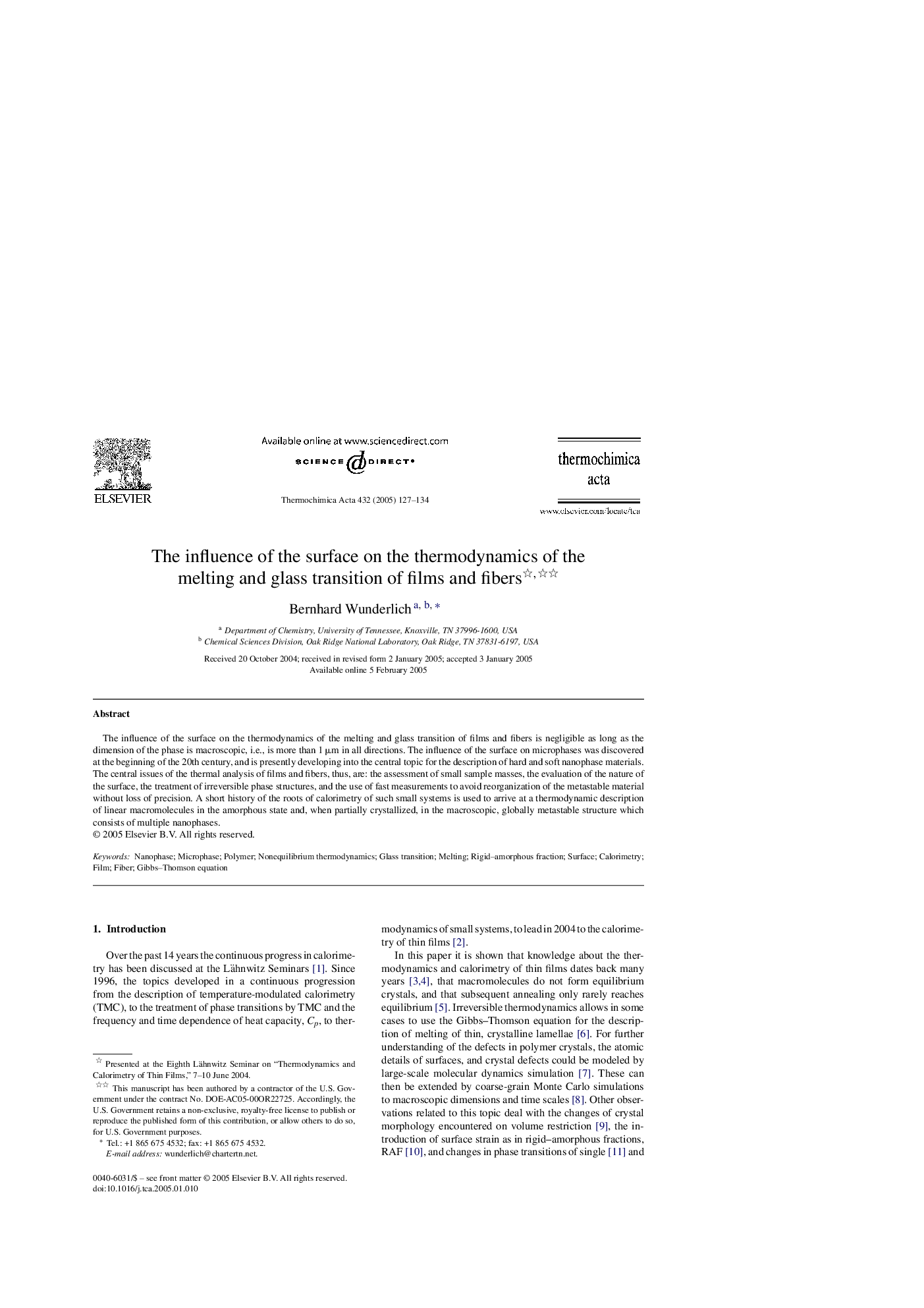| Article ID | Journal | Published Year | Pages | File Type |
|---|---|---|---|---|
| 10393236 | Thermochimica Acta | 2005 | 8 Pages |
Abstract
The influence of the surface on the thermodynamics of the melting and glass transition of films and fibers is negligible as long as the dimension of the phase is macroscopic, i.e., is more than 1 μm in all directions. The influence of the surface on microphases was discovered at the beginning of the 20th century, and is presently developing into the central topic for the description of hard and soft nanophase materials. The central issues of the thermal analysis of films and fibers, thus, are: the assessment of small sample masses, the evaluation of the nature of the surface, the treatment of irreversible phase structures, and the use of fast measurements to avoid reorganization of the metastable material without loss of precision. A short history of the roots of calorimetry of such small systems is used to arrive at a thermodynamic description of linear macromolecules in the amorphous state and, when partially crystallized, in the macroscopic, globally metastable structure which consists of multiple nanophases.
Keywords
Related Topics
Physical Sciences and Engineering
Chemical Engineering
Fluid Flow and Transfer Processes
Authors
Bernhard Wunderlich,
